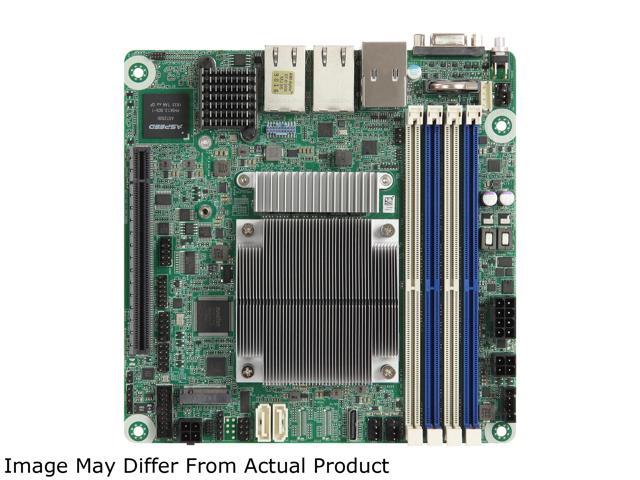mstang1988
Contributor
- Joined
- Aug 20, 2012
- Messages
- 102
I'm moving onto my next Freenas adventure. I've been a long time user but this time might up my game slightly.
Today I'm running
Motherboard:
X9SRL-F
RAM:
128GB ECC DDR3 (I don't remember the brand/model)
Processor:
Intel(R) Xeon(R) CPU E5-1620 v2 @ 3.70GHz
92xx SAS adapter flashed to JBOD mode passed through to Freenas
2 pools of 6x3TB HGST 7200RPM raidz2
Intel 520 or 540 10Gb NIC's
SSD for ESX boot drive
Micron p320h 700GB (VM datastore)
 www.anandtech.com
www.anandtech.com
This time I'm thinking I'd like to move over most (if not all) of my VM's to the freenas datastore. I still want high I/O performance for VM's because sluggishness annoys me. I'm also reducing the footprint/power consumption of my next rig.
AsRock Rack EPYC3251D4I-2T Mini-ITX

 www.newegg.com
www.newegg.com
32GBx4 (128GB RAM) DDR4
Optane 905P 380GB
Oculink 4i to 4 sata (we will see if freenas recognizes this). If not I'll swap in my 92xx PCI adapter for the 6 sata ports I need
6x16TB seagate exos 7200RPM drives
Possible PCIe->m2 adapter + 1TB 970 Evo Plus
Any thoughts on the best way to setup this rig for VM's? Should I expose the zpool via NFS and utilizing the NVMe's as cache disks? Alternatively I've thought about doing the same as I currently have an letting ESX make raw use of them.
The main benefit I want to get out of a shared datastore is I can get a vSphere license for myself (at an affordable cost) and am considering adding 2 other compute nodes with only NVMe drives. This would allow me to vmotion etc on my home cluster.
Today I'm running
Motherboard:
X9SRL-F
RAM:
128GB ECC DDR3 (I don't remember the brand/model)
Processor:
Intel(R) Xeon(R) CPU E5-1620 v2 @ 3.70GHz
92xx SAS adapter flashed to JBOD mode passed through to Freenas
2 pools of 6x3TB HGST 7200RPM raidz2
Intel 520 or 540 10Gb NIC's
SSD for ESX boot drive
Micron p320h 700GB (VM datastore)
Micron P320h PCIe SSD (700GB) Review
This time I'm thinking I'd like to move over most (if not all) of my VM's to the freenas datastore. I still want high I/O performance for VM's because sluggishness annoys me. I'm also reducing the footprint/power consumption of my next rig.
AsRock Rack EPYC3251D4I-2T Mini-ITX

AsRock Rack Mini-ITX Server Motherboard AMD EPYC 3251 - Newegg.com
Buy AsRock Rack EPYC3251D4I-2T Mini-ITX Server Motherboard AMD EPYC 3251 SoC 8 Cores Dual 10 GLAN with fast shipping and top-rated customer service. Once you know, you Newegg!
32GBx4 (128GB RAM) DDR4
Optane 905P 380GB
Oculink 4i to 4 sata (we will see if freenas recognizes this). If not I'll swap in my 92xx PCI adapter for the 6 sata ports I need
6x16TB seagate exos 7200RPM drives
Possible PCIe->m2 adapter + 1TB 970 Evo Plus
Any thoughts on the best way to setup this rig for VM's? Should I expose the zpool via NFS and utilizing the NVMe's as cache disks? Alternatively I've thought about doing the same as I currently have an letting ESX make raw use of them.
The main benefit I want to get out of a shared datastore is I can get a vSphere license for myself (at an affordable cost) and am considering adding 2 other compute nodes with only NVMe drives. This would allow me to vmotion etc on my home cluster.
